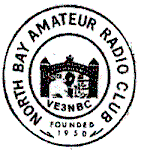RAC Bulletin 100220
Primary tabs
RAC Ontario Section Bulletin for February 20, 2010
NATIONAL NEWS
ONTARIO SECTION NEWS
1. Great Lakes Net Time Change
Effective February 15, the Great Lakes Emergency and Traffic Net
(GLETN) has changed its operating time from 6:30 pm Eastern to 7 pm
Eastern Time. As band conditions improve the net will move back to 8
pm in half-hour increments.
-- Grant Watson K8VFZ, via Shawn Gartley VE3PSV
2. CW Operators Needed
Glenn Killam VE3GNA, Section Traffic Manager for the Ontario Section,
is looking for operators to visit some of the CW Traffic Nets to pick
up any traffic destined for Ontario.
Glenn suggests that you monitor the following frequencies:
Empire State Slow Speed Net (ESS) 7 pm 3576 kHz.
Second Region Net (2RN) Cycle 4 early 7:45 pm, late 9:30 pm 3576 kHz.
Hit and Bounce Slow Speed Net (HBSN) 7:30 am 3576 kHz
Hit and Bounce Net (HBN), 8:30 am 7042 kHz weekdays, 7114 kHz Saturday
and Sunday.
If you have questions, email Glenn, ve3gna (at) xplornet (dot) ca.
-- Ontario Phone Net Blog
ITEMS OF INTEREST
3. IARU Agrees Emergency Frequencies
All three regions of the International Amateur Radio Union have
agreed on three global Center of Activity (CoA) frequencies for use
in the event of emergencies: 14.300, 18.160 and 21.360 MHz. When no
emergency operations are being conducted, these frequencies are open
for normal amateur usage.
-- ARRL Contest Update
4. Ham Radio Deluxe Software
Ham Radio Deluxe (HRD) is a suite of free Windows programs providing
computer control for commonly used transceivers and receivers. HRD
also includes logging, mapping, satellite tracking, and the program
Digital Master 780 (DM780) which supports many digital modes.
HRD is designed for Windows 2000 or higher (XP, Vista, 7), also
Internet Explorer 6.0 (or higher) is required. Download it from
www.ham-radio-deluxe.com
-- Handi-Ham News
5. ITU Digitizes Historical Archives
The International Telecommunication Union (ITU) has launched the
"History of ITU Portal," at www.itu.int/history This is part of a
project to digitize, catalogue, and make freely available the ITU's
historical documents since its founding in 1865. This includes
documents from early telegraph and telephone conferences, as well as
Radiocommunication Conferences since 1903.
-- ARRL Web
This concludes this week's bulletin. Does anyone require repeats or
clarifications?
